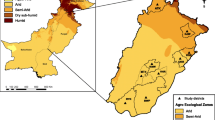Abstract
The occurrence of ectoparasites in sheep flocks is frequently reported but seldom quantified. Sheep production used to be a predominantly family activity in the state of Sa~o Paulo (Brazil), but it began to become a commercial activity in the past decade. Thus, information about the ectoparasites existing in sheep flocks has become necessary. The present data were obtained by means of questionnaires sent to all sheep breeders belonging to the `Associaça~o Paulista de Criadores de Ovinos' (ASPACO; Sa~o Paulo State Association of Sheep Breeders). Response reliability was tested by means of random visits paid to 10.6% of the respondents. Most of the properties (89.5%) reported the presence of one or more ectoparasites. Screw-worm (Cochliomyia hominivorax) was the most frequent ectoparasite (72.5%), followed by bot fly larvae (Dermatobia hominis, 45.0%), ticks (Amblyomma cajennense) and Boophilus microplus, 31.3%) and finally lice (Damalinia ovis, 13.8%). Combined infestations also occurred, the most common one being screw-worm with bot fly larvae (36.0%) followed by bot fly larvae with ticks (13.9%), screw-worm with ticks (9.3%), bot fly larvae with lice (6.9%), and ticks with lice (5.0%). The most common triple combination was screw-worm, bot fly larvae and ticks (12.8%). Breeds raised for meat or wool were attacked by bot fly larvae and ticks more often than other breeds. Lice were only absent from animals of indigenous breeds. The relationships among these ectoparasites are discussed in terms of sheep breeds, flock size, seasonality and the ectoparasitic combinations on the host.
Similar content being viewed by others
REFERENCES
Ahrens, E.H., Gladney, W.J., McWhoter, G.M. and Deer, J.A., 1977. Prevention of screwworm infestation in cattle by controlling Gulf Coast ticks with slow release insecticide devices. Journal of Economic Entomology, 70, 581-585
Amarante, A.F.T., Barbosa, M.A., Oliveira-Sequeira, T.C. and Fernandes, S., 1992. Epidemiology of sheep myiases in São Paulo State, Brazil. Tropical Animal Health and Production, 24, 36-39
FAO, 1997. Report of the FAO expert consultation on ticks and tick-borne diseases of sheep and goats, Rome, 29-30 September 1994. Parasitologia, 39, 83-89
French, N.P., Cripps, P.J. and Morgan, K.L., 1992. Prevalence, regional distribution and control of blowfly strike in England and Wales. Veterinary Record, 131, 337-342
Goodman, L.A., 1964. Simultaneous confidence intervals for contrasts among multinomial populations. Annals of Mathematical Statistics, 35, 716-725
Jardim,R., 1987. Os ovinos, 4th edn, (Nobel, São Paulo), 37-61
Lello, E., Pinheiro, F.A. and Noce, O.F., 1982. Epidemiologia de miíases no município de Botucatu, S.P. Brasil. Arquivos de Escola de Veterinária UFMG, 34, 93-108
Lemos, A.M., Teodoro, R.L., Oliveira, G.P. and Madalena, F.E., 1985. Comparative performance of six Holstein-Friesian × Guzera grades in Brazil: 3-Burdens of Boophilus microplus under field conditions. Animal Production, 41, 187-191
Madeira, N.G., Amarante, A.F.T. and Padovani, C.R., 1998. Effect of management practices on screw-worm among sheep in São Paulo State, Brazil. Tropical Animal Health and Production, 30, 149-157
Maia, A.A.M. and Guimarães, M.P., 1985. Berne: susceptibilidade de bovinos, distribuição no hospedeiro, associação com outras mií ases e abcessos. Arquivo Brasileiro de Medicina Veterinária e Zootecnia, 37, 461-467
Moreno, E.C., 1984. Incidência de Ixodídeos em bovinos de leite e prevalência em animais domésticos da região metalúrgica de Minas Gerais, (MS thesis, Departamento de Parasitologia, Universidade Federal de Minas Gerais)
Ruiz-Martinez, I., Gomes, F., Perrez, J.M. and Poudevigne, F.A., 1996. The role of botfly myiasis due to Dermatobia hominis L. Jr. (Diptera: Cuterebridae) as a predisposing factor to New World screwworm myiasis (Cochliomyia hominivorax Coquerel) (Diptera: Calliphoridae). Annals of the New York Academy of Sciences, 791, 434-442
Sancho, E., Caballero, M. and Ruiz-Martinez, I., 1996. The associated micro£ora to the larvae of human bot fly Dermatobia hominis L. Jr. (Diptera: Cuterebridae) and its furuncular lesions in cattle. Memórias do Instituto Oswaldo Cruz, 91, 293-298
Siemiatycki, J.A., 1979. A comparison of mail, telephone, and home interview strategies for household health surveys. American Journal of Public Health, 69, 238-245
Thomas, D.B., 1987. The incidence of screwworm (Diptera: Calliphoridae) and torsalo (Diptera: Cuterebridae) myiasis on the Yucatan peninsula of Mexico. Journal of Economic Entomology, 24, 498-502
Verissimo, C.J. and Franco, A.V.M., 1994. Relação entre infestação pelo carrapato Boophilus microplus e ocorreância de miíase em bovinos mestiços. Boletim de Indu¨ stria Animal, 51, 3-5
Author information
Authors and Affiliations
Rights and permissions
About this article
Cite this article
Madeira, N., Amarante, A. & Padovani, C. Diversity of Ectoparasites in Sheep Flocks in Sa~o Paulo, Brazil. Tropical Animal Health and Production 32, 225–232 (2000). https://doi.org/10.1023/A:1005227402872
Issue Date:
DOI: https://doi.org/10.1023/A:1005227402872




